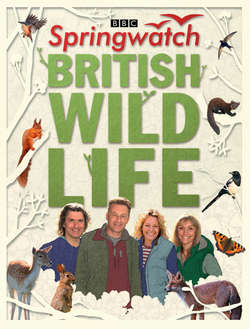Читать книгу Springwatch British Wildlife: Accompanies the BBC 2 TV series - Stephen Moss - Страница 25
ОглавлениеPigeons & Doves
©Phil McLean/FLPA
©Tony Hamblin/FLPA
The wood pigeon and collared dove are two of our commonest garden birds, regularly coming to feed on bird tables.
The monotonous but soothing sounds of cooing – whether the familiar five notes of the wood pigeon or the three notes of the collared dove – are among the classic sounds of the British summer. It is often said that the wood pigeon is giving instructions to its listener: ‘Take two cows, Taf-fy…’ or ‘My toe is bleeding…’, in each case with the emphasis on the middle syllable. The collared dove is, if anything, even more monotonous: ‘I’m so bored…’ is one suggested mnemonic. Others think that the bird is giving unenthusiastic support to its favourite football team: ‘U-ni-ted, U-ni-ted.…’
In recent years, both these familiar birds have been doing very well, frequently appearing in the top ten of the most common and widespread garden birds. And yet they could hardly have two more different stories of success.
The wood pigeon is still essentially a farmland bird, often seen in vast numbers as they gather to feed on grain, and are then shot by irate farmers. But although still common in the countryside, in recent years the wood pigeon has moved into our towns and cities, and is now a very common sight in suburban gardens. Large and stout, it is easily told apart from other pigeons and doves by the thick white band around its neck. In flight, it has another obvious field mark: a broad white stripe down the centre of each wing.
The collared dove is another familiar fixture as a British garden bird, found in virtually the whole of the country, apart from the extreme north and west. Yet little over half a century ago, it was virtually unknown in Britain. Its extraordinary spread westwards across Europe began in the early twentieth century, and by the early 1950s it had hopped across the North Sea and gained a toehold here. The very first pair bred in Norfolk during the mid-1950s – some of today’s birders recall going there specially to see them! Yet, twenty years later, it was a common bird in villages and towns across the country. Smaller and more pinkish-brown in colour than most other pigeons and doves, it also sports the neat black collar that gives the species its name.
The feral, town or London pigeon is regarded far less affectionately than either of these two. Its origins, however, are bizarre. Its ancestor, the rock dove, lives only on wild and rocky cliffs around the coast, and is the last bird you would have expected to colonise our urban jungles. The story began centuries ago, when our ancestors domesticated these birds for food and feathers. Later, some escaped and went feral. During the past century, others escaped or got lost when on races – despite their extraordinary navigational ability, racing pigeons don’t always get home. For years, the most famous population of feral pigeons lived in London’s Trafalgar Square, until visitors were banned from feeding them because of fears of disease. Today, they have another problem to contend with: peregrines, the pigeon’s main predator, have moved into many of our city centres.
A fourth resident species, the stock dove, is one of the most overlooked of all our common birds, perhaps because it resembles a smaller version of the wood pigeon, without the white collar. Close-up it is rather attractive, with a greenish-purple patch on its neck, rather like the sheen caused by a thin film of oil.
A fifth species, the turtle dove, is the odd one out, being the only British member of its family to migrate to Africa. Sadly, turtle doves are far less common than they used to be. As with so many of our farmland birds, this is partly because of modern farming methods, but it is also because thousands are shot and killed as they pass through the Mediterranean region each spring and autumn. By the way, the name ‘turtle’ has nothing to do with reptiles, but is a corruption of the bird’s purring call, which sounds like a soft ‘tur-tur, tur-tur.…’
©David Tipling/FLPA
©Erica Olsen/FLPA
The feral pigeon and stock dove are superficially similar, but generally live in different habitats.
©Neil Bowman/FLPA
The turtle dove is one of our most rapidly declining farmland birds, due to problems at home and abroad.
